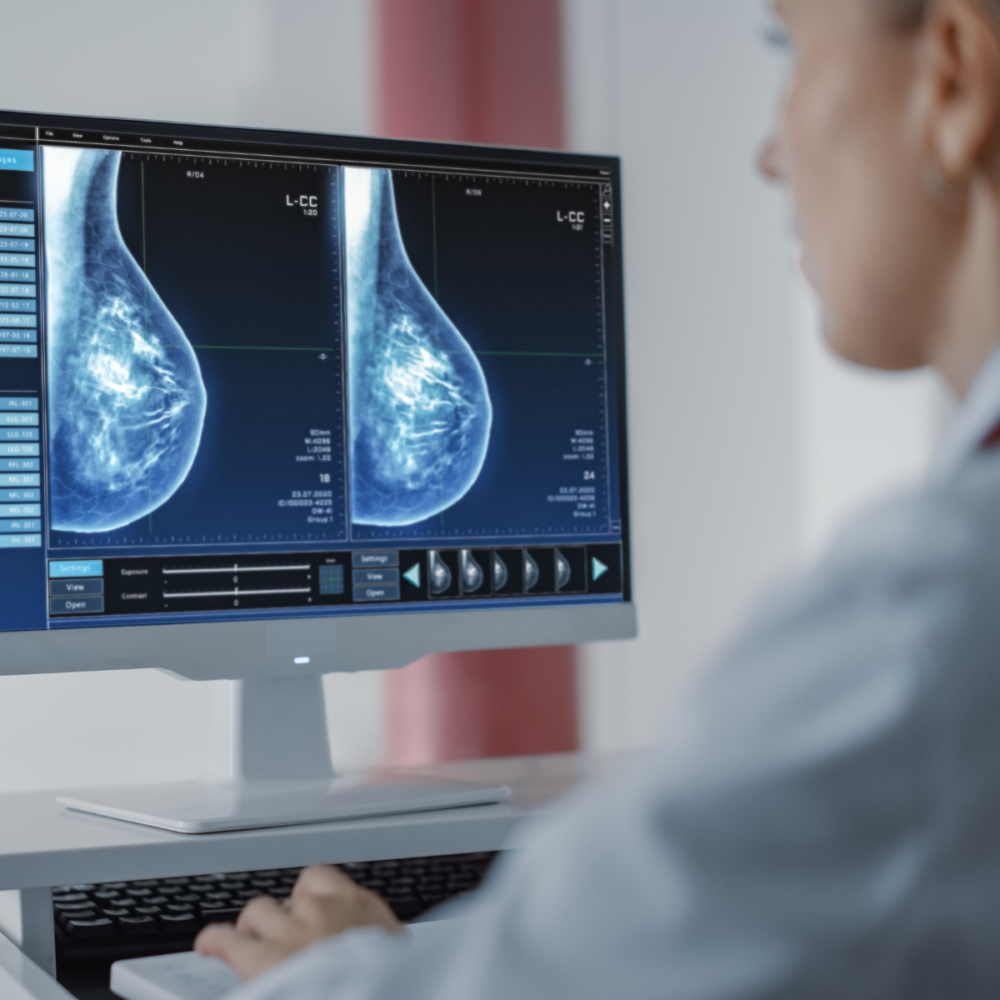መከላከል የካንሰር ፋውንዴሽን በዩኤስ የመከላከያ አገልግሎት ግብረ ኃይል ለወጣው አዲስ የጡት ካንሰር ምርመራ መመሪያ ምላሽ ይሰጣል

Today, the U.S. Preventive Services Task Force (USPSTF) released new breast cancer screening guidelines, recommending that women of average risk receive mammograms every other year starting at age 40. Previously, the guidelines said to discuss the benefits and risks of breast cancer screening beginning at age 40 and begin biennial (every other year) mammograms by age 50. The finalized guidelines come nearly a year after the USPSTF released draft recommendations of lowering the breast cancer screening age from 50 to 40 after citing increased rates of breast cancer in younger adults.
Despite confusing and shifting recommendations in recent years, the Prevent Cancer Foundation has always stood firm in encouraging women to begin annual breast cancer screening at age 40. Annual screening is essential for all people with breasts, especially for Black women who are at increased risk of breast cancer at earlier ages and have higher mortality rates from breast cancer compared to other racial and ethnic groups. Black women are 40% more likely than white women to die from breast cancer.
The updated recommendations have the potential to impact insurance coverage for women ages 40-49 if current legislation should expire. With the new recommendations, insurers will be required to cover biennial screenings for this age group per the Affordable Care Act (ACA). Currently, insurers must cover ዓመታዊ breast cancer screening for this age group under the Protecting Access to Lifesaving Screenings (PALS) Act, which is set to expire on January 1, 2026.
Lowering the age of breast cancer screening to begin at 40 is a win for cancer prevention and early detection; however, the Foundation is disappointed the guidelines recommend a biennial time interval for screening. To catch newly developed cancers or stop previously missed cancers before they have too much time to grow, those getting screened for breast cancer should do so annually.
Screening for breast cancer beginning at an earlier age will allow health care providers to find more cancers in earlier, more treatable stages, which is crucial because ቀደምት ማወቂያ = የተሻሉ ውጤቶች. Breast cancer is highly curable if found in its early stages before it has spread to surrounding areas of the breast. According to the USPSTF, a group of primary care professionals who establish recommendations on certain health services (such as cancer screenings), the updated guidelines could result in 20% more lives being saved compared to previous recommendations.
የመከላከያ ካንሰር ፋውንዴሽን የጡት ካንሰርን ለማጣራት የብሔራዊ አጠቃላይ የካንሰር ኔትወርክ (NCCN) መመሪያዎችን ይደግፋል፡-
- Beginning at age 25, talk with your health care provider at least once every three years for risk assessment, risk reduction counseling and a clinical breast exam.
- ለአማካይ አደጋ ተጋላጭ ለሆኑ ከ40 ዓመት ጀምሮ በ2D ወይም 3D የማጣሪያ ማሞግራፊ ይመርመሩ።
- ከፍተኛ ተጋላጭነት ላለባቸው፣ ስለ አመታዊ የማሞግራፊ ምርመራ እና እንደ የጡት ማግኔቲክ ድምጽ ማጉያ ምስል (ኤምአርአይ) ካሉ የጤና እንክብካቤ አቅራቢዎ ጋር ይነጋገሩ።
While the updated guidance will result in catching more cancers in earlier stages, continuing to educate people about screening and eligibility requirements is necessary to address low screening rates seen across the country. According to the Prevent Cancer Foundation’s 2024 ቀደምት ማወቂያ ዳሰሳ, 1 in 3 women ages 40 or older say they are not up to date on their breast cancer screening. Additionally, more than 1 in 5 women ages 40 or older who are not up to date on their breast cancer screening say it is because they don’t have symptoms and don’t feel a need to get a breast cancer screening.
Regardless of signs or symptoms, all people with breasts should begin screening at age 40 if they are of average risk—routine cancer screening can detect cancer in early, more treatable stages.
ቀደም ብሎ የማወቅ እና መደበኛ የካንሰር ምርመራዎች አስፈላጊነትን ይወቁ።